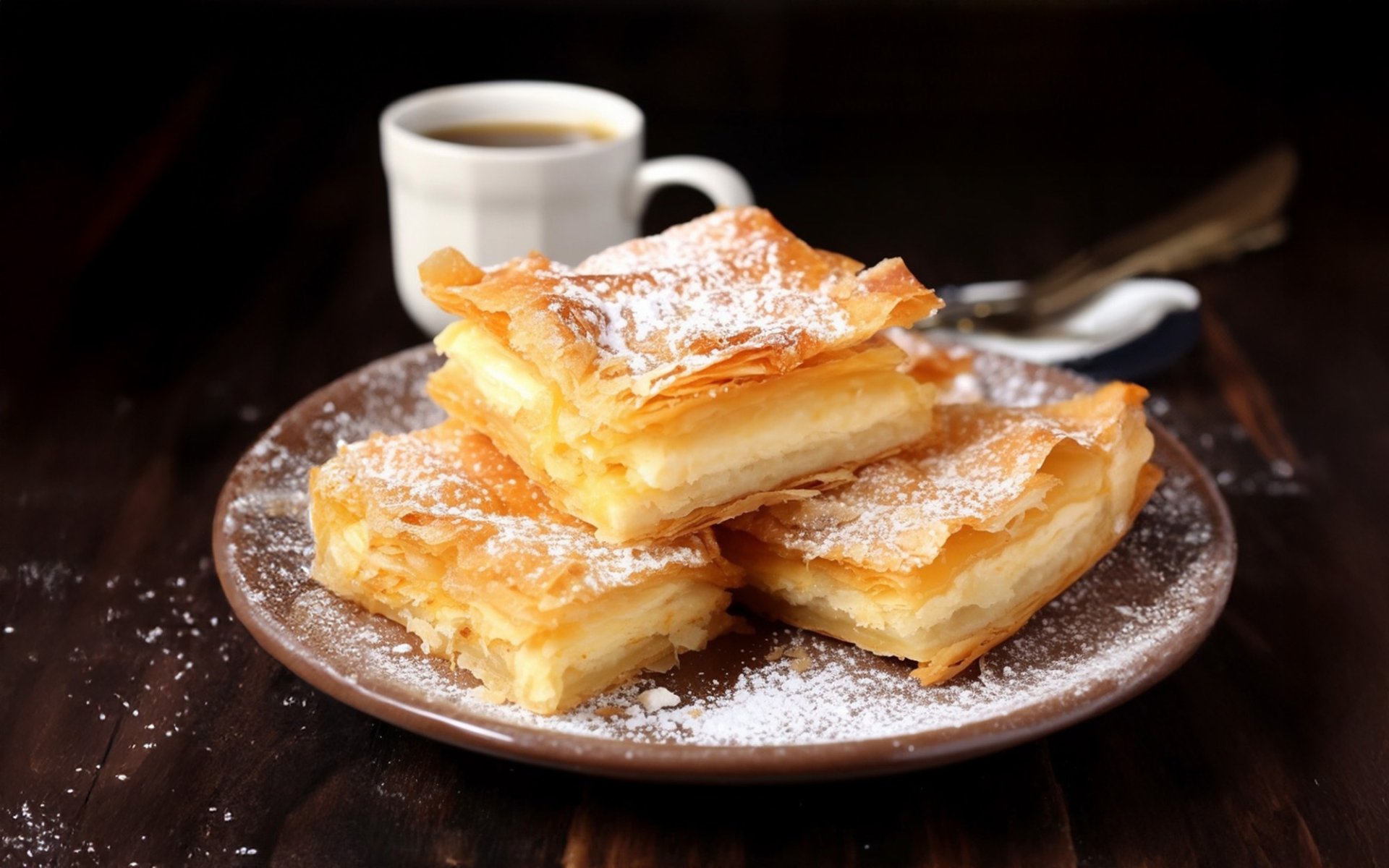Bougatsa

In Greek culture, Bougatsa (Boo-gah-tsa) is a beloved pastry that carries influences dating back to the Byzantine era. Made from delicate Phyllo pastry, its typically filled with a creamy custard, semolina, or other savory fillings. The name Bougatsa itself is derived from the Ottoman word Pogátsa, meaning a "pie filled with filling," accurately describing its characteristic feature.
Origins in Constantinople: From Savory to Sweet
The origins of Bougatsa trace back to Constantinople, the grand capital of the Byzantine Empire, now known as Istanbul in modern-day Turkey. Although currently under Turkish rule, this city was once a vibrant center of Greek and Byzantine civilization. Originally, Bougatsa was not the sweet pastry we know today; it was a savory dish often enjoyed as breakfast, filled with cheese, spinach, or various meats.
Over time, after the fall of the Byzantine Empire and its subsequent rule by the Ottoman Empire, Bougatsa continued to thrive in Constantinople. The renowned traveler Evlia Tselebi documented finding numerous Bougatsa shops in the city during the 16th century. These shops offered a variety of Bougatsa forms, such as Bougatsa kuru (a dry, oil-free version), Bougatsa with minced meat, and Bougatsa with cheese, demonstrating the dish's diverse range even in ancient times.
The Transformation to Sweet in Greece: The Heart of Thessaloniki
Later, when Greece gained independence from the Ottoman Empire in the 19th century, Bougatsa evolved into a sweet pastry, typically filled with custard, cream, and semolina (a coarse flour made from durum wheat). This sweet version gained immense popularity, particularly in the city of Thessaloniki in northern Greece.
Part of Bougatsa's popularity in Greece can be attributed to the significant population exchange during the Greco-Turkish War in 1922. Many refugees from Asia Minor (the western part of Asia, largely modern-day Turkey) relocated to northern Greece, especially to Thessaloniki. They brought their culinary traditions, including the art of making Bougatsa, with them. This influx helped spread Bougatsa's popularity throughout Greek culture, making it an iconic symbol of Thessaloniki.
The Art of Bougatsa and Its International Appeal
In recent years, Bougatsa has seen increasing popularity both in Greece and internationally. This surge is partly due to the rise in tourism to Greece and the global diaspora of Greek communities, making Bougatsa more widely known and accessible. Bakeries and restaurants worldwide are now experimenting with new fillings to cater to evolving tastes, resulting in various exciting Bougatsa creations.
Despite modern adaptations, the art of making Bougatsa remains a cherished tradition passed down through generations, particularly among Greek pastry artisans who adhere to traditional methods. The process of crafting Bougatsa demands meticulous attention to detail, from skillfully stretching the Phyllo pastry into paper-thin sheets to delicately folding and shaping the pastry, and precisely preparing the fillings to achieve a harmonious flavor. Every step is crucial, making Bougatsa more than just a pastry; it is a work of art that reflects Greece's rich cultural heritage. If you're looking for ingredients to make Greek-style pastries or wish to experience authentic Bougatsa, Rimping Supermarket offers a selection of quality ingredients for your culinary needs.


